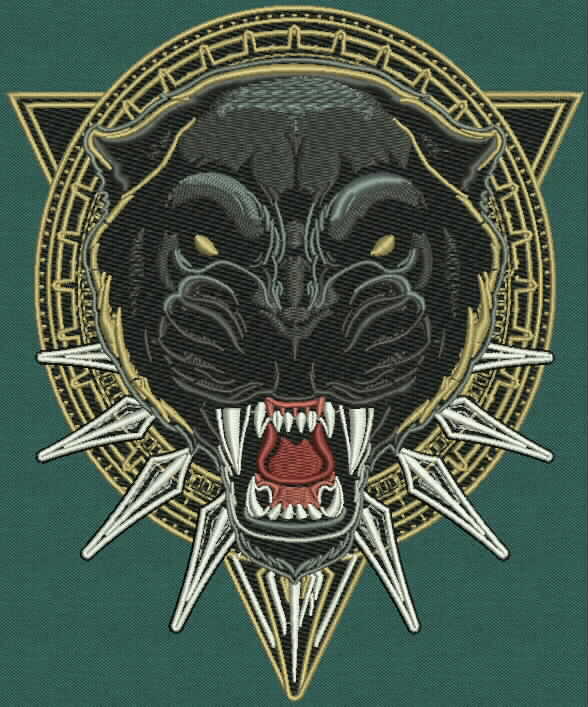Affordable Digitizing for Embroidery: Accuracy and Detail
Affordable Digitizing for Embroidery: Accuracy and Detail
Blog Article
Explore Various Kinds Of Needlework Digitizing Methods
Needlework digitizing has actually advanced substantially over the years, offering a myriad of methods to bring layouts to life in the electronic world. The world extends to a lot more sophisticated techniques like photorealistic needlework digitizing and the fascinating realm of 3D embroidery digitizing.
Typical Hand Embroidery Digitizing
Traditional hand embroidery digitizing involves the process of converting complex hand-stitched designs into digital styles for equipment needlework. This method needs experienced craftsmens to thoroughly analyze the handmade style and then make use of specialized software application to recreate it in a digital layout. Each stitch, shade, and detail has to be very carefully equated to make sure that the essence of the original hand needlework is preserved in the digital version.
One of the key difficulties of typical hand embroidery digitizing is catching the complexities and subtleties of the handmade style. Digitizing for Embroidery. Artisans need to have a deep understanding of various needlework strategies, such as satin stitch, chain stitch, and French knots, to accurately reproduce these methods in the electronic realm. Additionally, they need to have an eager eye for information to guarantee that the electronic style preserves the exact same level of artistry and craftsmanship as the original hand-stitched item
Punching Strategy
To effortlessly change from traditional hand embroidery digitizing to the punching strategy, craftsmens must currently focus on converting the complex electronic designs into directions that embroidery machines can analyze. The punching technique includes utilizing specialized software application to produce digital data which contain commands for the embroidery machine to follow. This process needs a deep understanding of not simply the layout itself however also the capacities and constraints of the embroidery maker.

Auto-Digitizing Software Programs
Needlework digitizing has been changed by the advent of auto-digitizing software application, providing craftsmens with innovative devices to transform electronic styles into needlework maker directions effectively. Auto-digitizing software programs make use of formulas to analyze electronic pictures or vector data and produce needlework styles instantly. These programs permit for fast and exact conversion of detailed styles right into stitch patterns, saving time and initiative for embroiderers.
One of the vital advantages of auto-digitizing software program is its straightforward user interface, making it obtainable to both beginners and seasoned digitizers. These programs typically consist of features such as stitch editing tools, string color matching, and the ability to sneak peek the last embroidered style. Additionally, auto-digitizing software application can take try this web-site care of complicated designs with several colors and intricate details, creating high-grade needlework files ideal for various clothing and fabric jobs.
While auto-digitizing software application offers comfort and performance, it is vital for customers to recognize the restrictions of automated digitizing. Fine-tuning and manual changes may still be required to accomplish the desired embroidery quality, specifically when managing detailed or one-of-a-kind layouts. By leveraging the capacities of auto-digitizing software program together with manual digitizing strategies, craftsmens can enhance their needlework digitizing procedure and produce spectacular embroidered items.
Photorealistic Embroidery Digitizing
Utilizing advanced electronic imaging strategies, attaining photorealistic outcomes in embroidery digitizing has actually become a desired skill amongst modern artisans. This method entails converting high-resolution images right into complex stitch patterns that carefully simulate the original style, causing embroidery pieces that display natural information and deepness.
To accomplish photorealistic embroidery digitizing, artisans should possess a keen eye for detail and a detailed understanding of how various stitch types and densities can impact the last end result. By very carefully mapping out each shade and color in important site the picture, embroiderers can develop a digital documents that guides the needlework maker to duplicate the nuances of the initial image properly.
Photorealistic needlework digitizing is especially prominent in developing official site custom styles for clothing, home decoration, and art pieces where recording the essence of a picture or artwork is crucial. This strategy allows artisans to transform memories, landscapes, portraits, and detailed art work into magnificent embroidered work of arts that showcase a blend of traditional workmanship and sophisticated modern technology.
3D Needlework Digitizing
With the development of electronic imaging techniques in accomplishing photorealistic cause embroidery digitizing, the exploration of 'D Needlework Digitizing' offers a new measurement to the intricacies of design replication. 'D Embroidery Digitizing' refers to the three-dimensional digitizing technique that adds deepness and appearance to embroidery layouts, creating an extra practical and aesthetically attractive end product. This method makes use of software that imitates the result of light and darkness on the embroidery layout, boosting its general visual impact.
Among the key advantages of 'D Embroidery Digitizing' is its capability to make layouts look more lifelike and vibrant. By adding depth to the embroidery design, the final product appears more reasonable and exciting (Digitizing for Embroidery). Furthermore, this strategy enables for more imaginative flexibility in design execution, allowing embroiderers to explore different structures and results that were formerly challenging to accomplish
Final Thought

Report this page